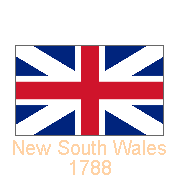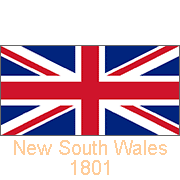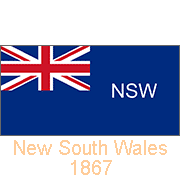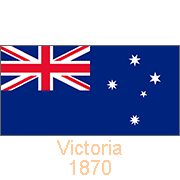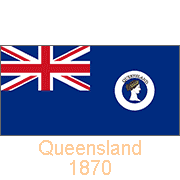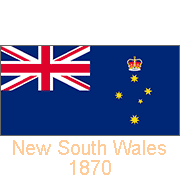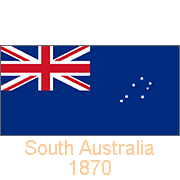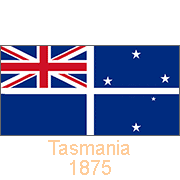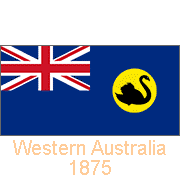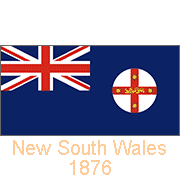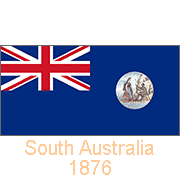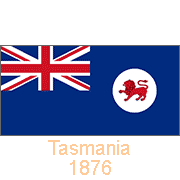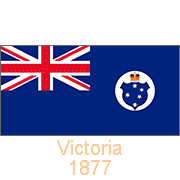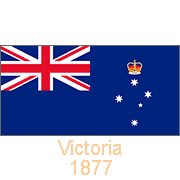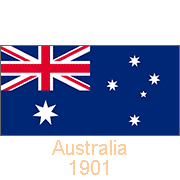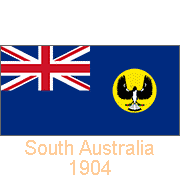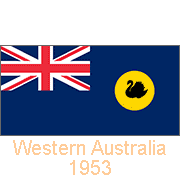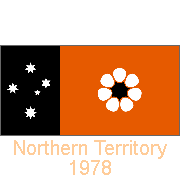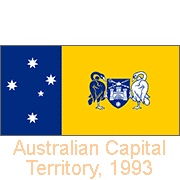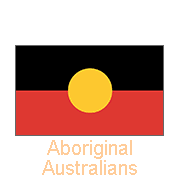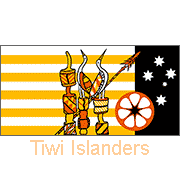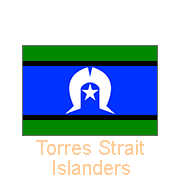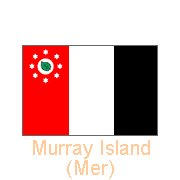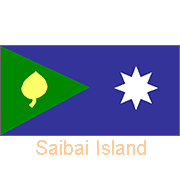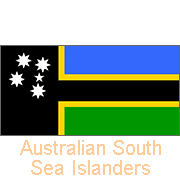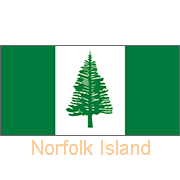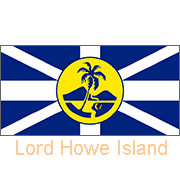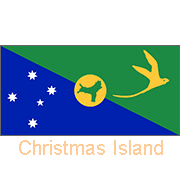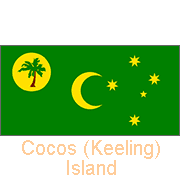Flags from Australia

A Flag history of Australia
The first official Australian flag seems to have been the 1867 flag of New South Wales, a British Blue Ensign defaced with the letters "NSW" in white in the fly, and was designed (as were all state flags) to comply with the recently passed British Colonial Naval Defence Act of 1865 which required that any colonial vessel should "wear the Blue Ensign with the seal or badge of the colony in the fly thereof".
you may then send it as a postcard if you wish.
In 1870 New South Wales and Victoria both adopted a British Blue Ensign with the Southern Cross in the fly; six years later New South Wales adopted the present flag as it was too similar to Victoria's. Since then all Australian colonial flags that were adopted were defaced British Blue Ensigns and when Australia became a nation on 1 January 1901 the National Flag that was chosen as the result of a competition was of a similar design, with the Southern Cross in the fly and the "Federation Star", symbolising the separate states and territories, placed below the Union Jack. It was, however, only officially adopted in 1954, the Union Jack having been used as Australia's flag until then, typical of the time when most Australians, using the word "home", meant the United Kingdom of Great Britain and Northern Ireland.
But times change and when the Northern Territory attained Self Government in 1978 it adopted a totally different flag, using local symbols, followed in 1993 with a similarly designed flag for the Australian Capital Territory. Meanwhile, Australia's Aboriginal people had adopted a flag of their own in 1992, followed by the Torres Strait Island people's flag the same year. Some Aboriginal and Torres Strait Islander groups have now adopted flags of their own, and more are likely to follow. In 1998 the Australian South Sea Islanders, descendants of Pacific Islanders who had been transported to Australia in the 19th century as coolie labour, mainly in the sugar cane plantations and timber-getting industries in Queensland and north eastern New South Wales, also formally adopted a flag, to distinguish themselves from Australia's indigenous Torres Strait Islanders with whom they were sometimes confused.
The small island territories of Norfolk Island and Lord Howe Island in resp. the Pacific Ocean and the Tasman Sea have adopted regional flags of their own; and so have the small Indian Ocean territories of Christmas Island and the Cocos (Keeling) Islands, as an expression that, although part of Australia, these places are totally unique.


